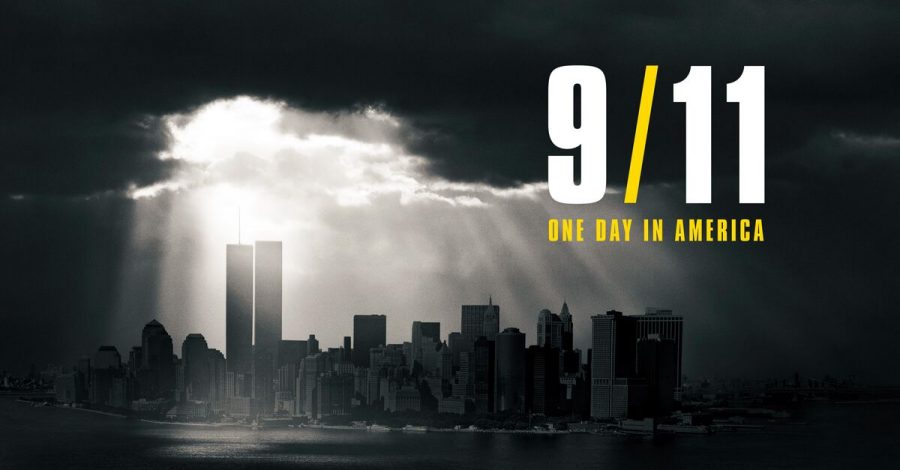A Review of 9/11: One Day in America
National Geographic released a heartbreaking yet informative documentary for the 20th anniversary of 9/11
Photo Courtesy of National Geographic
This docu series explains the frightening events of the September 11th, 2001, attacks.
With the 20th anniversary of the September 11th, 2001 attacks on America, many television stations are putting together memorials or documentaries, including National Geographic. A six-episode docu-series, titled 9/11: One Day in America, was released on August 29th to cable television networks and streaming services such as Hulu and YouTube TV.
The first episode of the heart wrenching docu-series begins very peacefully as many thought that ultimately fateful Tuesday would turn out to be. The normalcy soon turns into concern as flight moderators begin to notice two planes not following their correct path in the sky.
Audio recordings with subtitles are displayed in the show as moderators try to get in touch with the pilots behind the controls of what is soon to be determined as hijacked planes.
The show continues with multiple angles of the North Tower being struck by Flight 11, which departed from Boston at 8:15 am, making its way to Los Angeles. Eyewitnesses are seen pointing and screaming into the sky as they watch what they thought was a terrible accident.
It was soon to be realized that this was no accident when a second plane flew into the South Tower of the World Trade Center at full speed. Flight 175 also departed from Boston en route to Los Angeles.
As the camera turns to the people who were on the ground watching this unfold, I was able to find the terror, confusion, and anger within their minds. My eyes did not dare look away from my screen.
In the midst of the chaos, the show cuts from film from the crash scene to interviews recently conducted with survivors who were trapped within the rubble. The producers also got first responders to tell their stories on how they gave their all to save innocent civilians caught in the act of terrorism.
Multiple survivors talk about last-minute relationships created with those who were nearby as they thought their lives would end together. Memories from those in front of the camera talking about their experience lead to their tears, which ultimately led to mine.
Perhaps what is the most horrifying of all was watching people hopelessly jumping out of top story windows of the towers. The camera was zoomed in so close to these moments that I was able to notice the hesitation until all hope of survival was gone. The show even captures the sound of lifeless bodies slamming against buildings after their fall.
Dramatic audio is placed in the background as it foreshadows first responders rushing into the destruction in an attempt to save lives. The show consists of video that followed these brave men and women into the World Trade Center as they tried to hide their fear in risking their own lives.
While filming inside the towers, it shows the view from windows where many could see what looked like continuous rain but was actually debris continuously falling from the impact 70 stories above them.
Because no amount of training ever prepared first responders for an horrific event such as 9/11, police and fire chiefs were forced to demand orders that they have never given before. The camera catches some following orders and others turning their backs.
Little did the frightened civilians of New York know that the attacks didn’t stop in their city. A third attack was planned on America but this time in the nation’s capital of Washington DC. Flight 77 was en route to Los Angeles from Washington DC but was also hijacked and struck the Pentagon. The show captured film of the many blazes that sparked due to the crash.
Throughout the six episodes, the docu-series jumps from heart-dropping scenes from Washington DC, Shanksville, PA, and New York City. What broke my heart the most was watching the North and South Towers of the World Trade Center collapse to nothing but a fatal mess.
Following the collapse were clouds of smoke that blew through the streets of New York, almost completely blocking out the sun. The show’s producers were able to find video of people who made it out of the deadly cloud alive but was covered in dust and blood.
In the final episodes of the series, the desperate search for remaining survivors underneath rubble is shown. The final survivor to be saved at approximately 11:30 that same night is the last to be interviewed.
To conclude the series, the producers show the memorial that now takes the place of the World Trade Center and also the memorial where Flight 93 impacted the field in Shanksville. The final scenes are a collection of all survivors in the interviews listing the names of every single life that was lost in the attacks.
While it was very difficult to watch at some moments, I thought National Geographic made an excellent documentary. The cuts between the chain of events and the interviews offer a perfect balance between informational pieces to emotional connections.
If anyone would like to watch clips that have never been released before and get a closer look at exactly what happened on 9/11, I would highly recommend taking a few days to watch these 44-minute episodes. National Geographic superbly depicts September 11th, 2001, as a day to honor those whose lives were lost and as a day never to be forgotten.

Anthony Durzo is a senior at North Allegheny Senior High School. This is his second year writing for The Uproar, although he has previously written for North Allegheny Intermediate's online newspaper, NAEye, for two years as well. Outside of school, he played hockey at Robert Morris University for eight years and has played piano for six. After tossing his cap into the air and waving goodbye to North...

